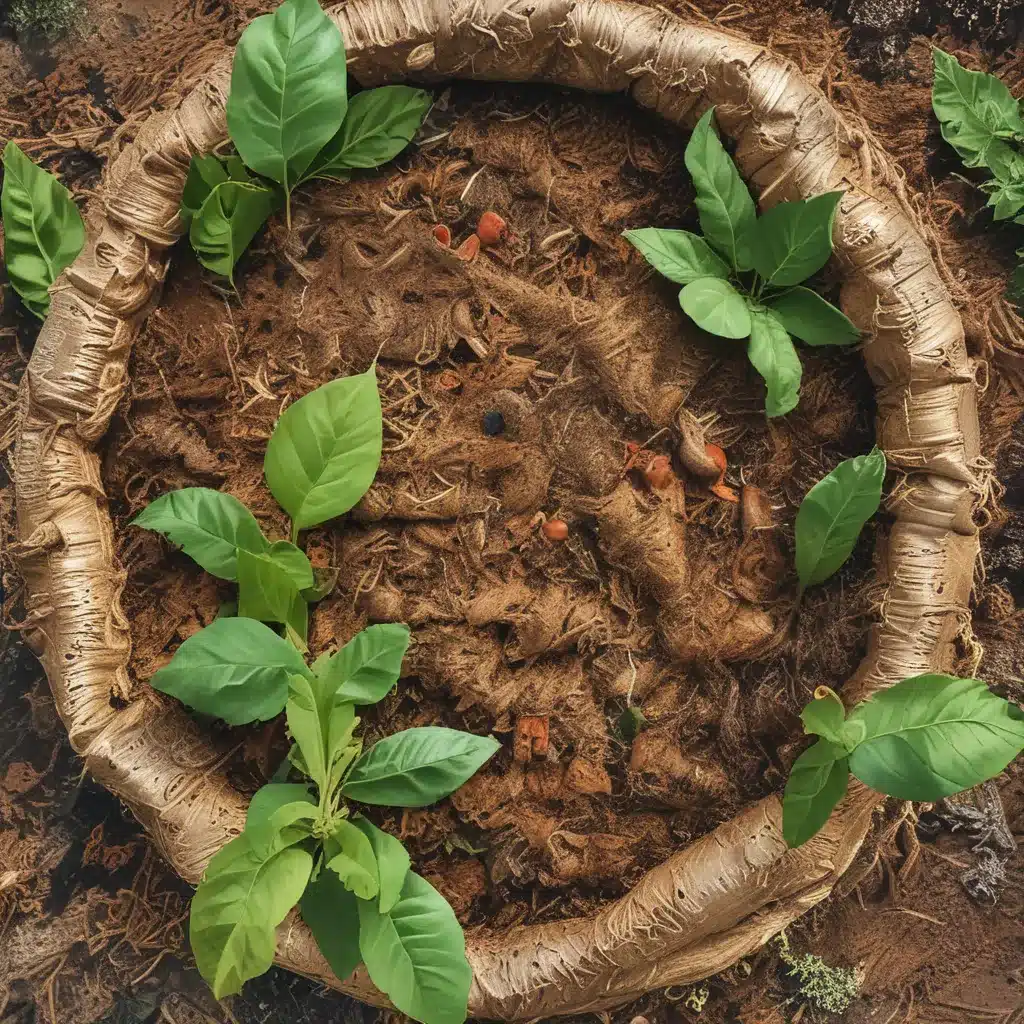
Breathing New Life into Coffee Grounds
As a passionate barista and coffee enthusiast, I’ve always been intrigued by the fascinating world of coffee production and the various byproducts it generates. One of the most interesting, yet often overlooked, components is the humble coffee chaff – those wispy, papery husks that are shed during the roasting process. While many may view it as mere waste, I’m here to share how we can breathe new life into this often-discarded resource and use it to nourish our local community gardens.
You see, I’ve long been fascinated by the concept of sustainability and finding ways to minimize waste, and when I stumbled upon the potential of coffee chaff as a valuable compost material, I knew I had to explore it further. After all, what better way to support our community and the environment than by transforming an otherwise underutilized byproduct into a nutrient-rich soil amendment?
Unlocking the Power of Coffee Chaff
So, what exactly is coffee chaff, and why is it such a valuable resource for community gardens? Well, let me break it down for you. Coffee chaff is the thin, papery skin that’s removed from the coffee bean during the roasting process. It’s essentially the “husk” of the bean, and it’s typically discarded as waste by most coffee roasters and cafes.
However, this humble byproduct is actually a treasure trove of nutrients that can work wonders for your garden soil. You see, coffee chaff is rich in nitrogen, phosphorus, and potassium – the three primary macronutrients that plants need to thrive. It also contains a wealth of micronutrients, such as calcium, magnesium, and iron, which help to build strong, healthy plants.
But the benefits of coffee chaff don’t stop there. It’s also an excellent source of organic matter, which can help to improve soil structure, increase water-holding capacity, and foster a thriving community of beneficial microorganisms. In essence, adding coffee chaff to your compost pile or directly to your garden beds can be a game-changer for your plants, helping them to grow stronger, more vibrant, and more resilient.
Composting Coffee Chaff: A Sustainable Solution
Now, you might be wondering, “Okay, I get the benefits, but how do I actually incorporate coffee chaff into my community garden?” Well, my friend, let me walk you through the process of composting coffee chaff for a truly sustainable solution.
First and foremost, it’s important to understand that coffee chaff is a “green” material in the composting world – meaning it’s high in nitrogen. This means that you’ll need to balance it out with “brown” materials, like dried leaves, shredded paper, or straw, to achieve the optimal carbon-to-nitrogen ratio for successful composting.
A good rule of thumb is to aim for a 30:1 ratio of brown to green materials. This helps to ensure that the microorganisms in your compost pile have the right mix of nutrients to thrive and break down the organic matter efficiently.
To get started, simply collect the coffee chaff from your local cafe or roastery (many are more than happy to share this resource!) and add it to your compost bin or pile, along with your brown materials. Be sure to mix everything together well to ensure even distribution of the nutrients.
As your compost matures, you’ll notice the coffee chaff breaking down and integrating seamlessly with the other organic materials. And the best part? Once your compost is ready, you can use it to nourish the soil in your community garden, helping to grow lush, vibrant plants that thrive on the nutrient-rich amendments.
Cultivating Community Partnerships
But the story doesn’t end there. You see, composting coffee chaff is not only an excellent way to improve the health of your garden – it’s also an opportunity to cultivate meaningful partnerships within your local community.
By reaching out to your neighborhood cafes and roasteries, you can establish mutually beneficial relationships where they provide you with their coffee chaff waste, and you, in turn, transform it into nutrient-rich compost that can be shared with the community. This not only helps to divert waste from landfills but also fosters a sense of collaboration and environmental stewardship.
Imagine the impact we could have if every community garden had a steady supply of coffee chaff to enrich their soil. The possibilities are endless – from lush, thriving vegetable patches to vibrant flower beds that beautify our shared spaces. It’s a win-win for everyone involved.
A Sustainable Future, One Compost Pile at a Time
As I reflect on the transformative power of composting coffee chaff, I can’t help but feel a deep sense of excitement and optimism. This simple act of repurposing a seemingly mundane byproduct has the potential to create a ripple effect of positive change – nourishing our gardens, strengthening our communities, and ultimately, contributing to a more sustainable future.
So, my fellow gardeners and coffee enthusiasts, I encourage you to embrace the magic of coffee chaff composting. Reach out to your local cafes, start a community compost pile, and watch as your garden flourishes with the rich, nutrient-dense soil that results. Together, we can turn our coffee grounds into green gold, and in the process, cultivate a more vibrant, sustainable world – one compost pile at a time.
And if you’re ever in the Bay Ridge neighborhood of Brooklyn, be sure to stop by GeoCuisine – our local Georgian Coffee House – where we’re proudly putting our coffee chaff to good use in our community garden. We’d love to share our story and inspire you to do the same in your neck of the woods.



















